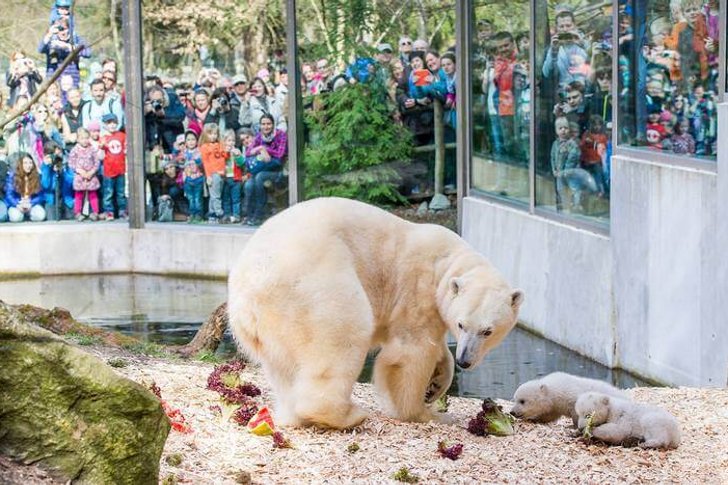The capital of Bavaria, the city of Munich, is not inferior in popularity among tourists to Berlin and Cologne. Not only is a huge number of architectural monuments concentrated here, but also the most interesting events take place, among which the central place belongs to the immortal beer festival Oktoberfest. In addition, a major European opera festival has been held here since 1875.
Stroll through the ornate city squares and breathe in the Christmas atmosphere, visit the grandiose Bavarian castles and plunge headlong into a raid on old German restaurants - all this can be done by a traveler who goes to Munich. In addition, the capital of Bavaria is a very prosperous and prosperous city. This is the perfect place for quality shopping.
What to see and where to go in Munich?
The most interesting and beautiful places for walking. Photos and a short description.
- Marienplatz
- New town hall
- Old town hall
- Nymphenburg Palace
- Blutenburg Castle
- Schleissheim Palace
- Munich Residence
- Cathedral of the Blessed Virgin Mary (Frauenkirche)
- Azamkirche Church
- St. Peter's Church
- Bavarian State Opera
- German Museum
- Bavarian National Museum
- BMW Museum
- Glyptothek
- Pinakothek Munich
- Memorial Museum Dachau
- Olympic Park
- Allianz Arena
- Oktoberfest
- Brasserie Hofbräuhaus
- Viktualienmarkt market
- Hofgarten park
- English garden
- Munich Zoo Hellabrunn
Marienplatz
The central square of Munich, where any tourist route inevitably leads. In the Middle Ages, knightly tournaments were held here and a fish market was open. Marienplatz has been the main square since the founding of the city. Here are the most significant sights, popular restaurants, shops, food market. The square is always busy and quite crowded.

New town hall
Neo-Gothic building on Marienplatz. The town hall was built in the second half of the 19th - early 20th centuries, although it seems that it is already several hundred years old. In 1874, the City Council moved here from the Old Town Hall. In order to make room for construction, about 30 residential buildings of the townspeople were demolished. The town hall is crowned with an 85-meter tower with a spire; the facade is decorated with figures of famous and significant personalities for German history.
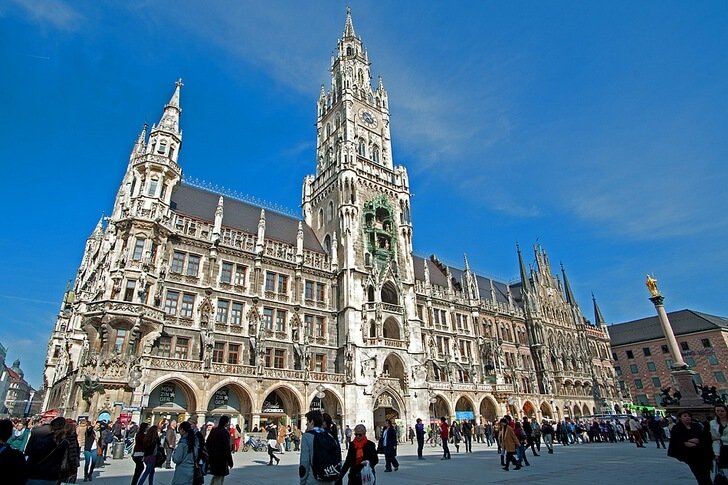
old town hall
A much more modest and ancient building than the New Town Hall. The first mention of it is found in the sources of the XIV century, but it is believed that it was erected in the XV century. The predominant building style is Gothic, with the addition of later Renaissance architectural elements. Now the Toy Museum is located in the Old Town Hall. As a result of the bombing of World War II, the building was damaged, and a new spire had to be installed on the main tower.
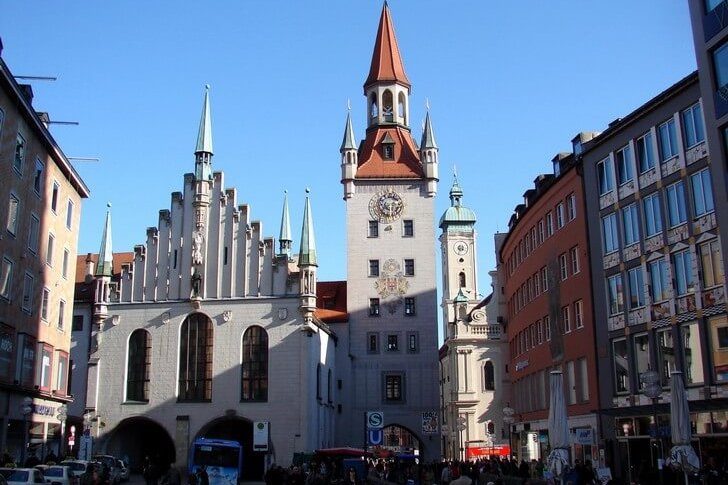
Nymphenburg Palace
The palace complex, which was founded in the second half of the XVII century. It was used as the residence of the ancient Bavarian Wittelsbach dynasty. The park surrounding the palace buildings is spread over an area of 200 hectares. The splendor and beauty of the interior decoration of Nymphenburg can be compared with the legendary "fabulous" Neuschweinstein castle. The descendants of the Wittelsbachs still live in the part of the palace that is closed to tourists.
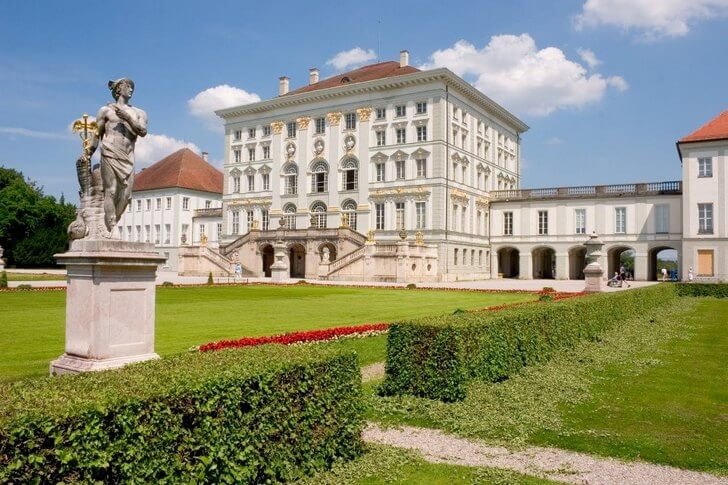
Blutenburg Castle
Hunting castle of the 15th century, erected at the request of Duke Albrecht III. The story of the duke's unhappy love is connected with Blutenburg. Against the will of his father, he secretly married a commoner and settled with her in the castle. The father tricked his son out of the fortress, and in his absence ordered to throw the unfortunate beloved into the river. Albrecht eventually forgave his father, and a chapel was erected in honor of the innocently ruined girl.

Schleissheim Palace
The palace was founded by Duke William V at the end of the 16th century. Then it was a small mansion, which the ruler used for privacy. His son Maximilian I rebuilt the estate to his liking and turned it into a palace. The Schleissheim complex includes three palaces built at different times and a vast park area. Johann Gump, Giovanni Trubillio and Francesco Rosa worked on the interior painting.

Munich Residence
The complex of buildings in the central part of Munich, which is considered one of the largest in Europe. It was erected over five centuries and finally completed only in the 19th century. The Munich Residence is the official residence of the rulers of Bavaria from the Wittelsbach dynasty. It includes: a museum, which occupies more than 100 halls, 10 palaces, a theater and a concert hall.
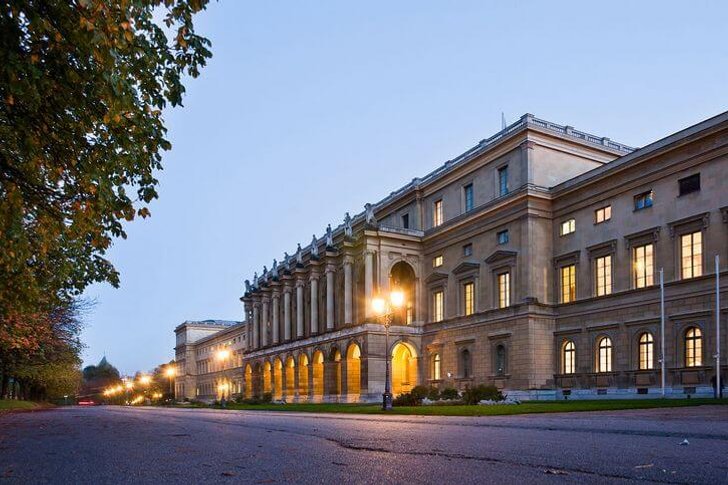
Cathedral of the Blessed Virgin Mary (Frauenkirche)
Munich Catholic Cathedral with the main tower 99 meters high. According to city law, it is forbidden to erect buildings higher than the Frauenkirche (this is a temporary decision, adopted in 2004 at a popular vote). They worked on the construction of the temple in the XIV-XV centuries. It was supposed to accommodate 20 thousand parishioners, although the population of the city in those centuries was only 13 thousand people.
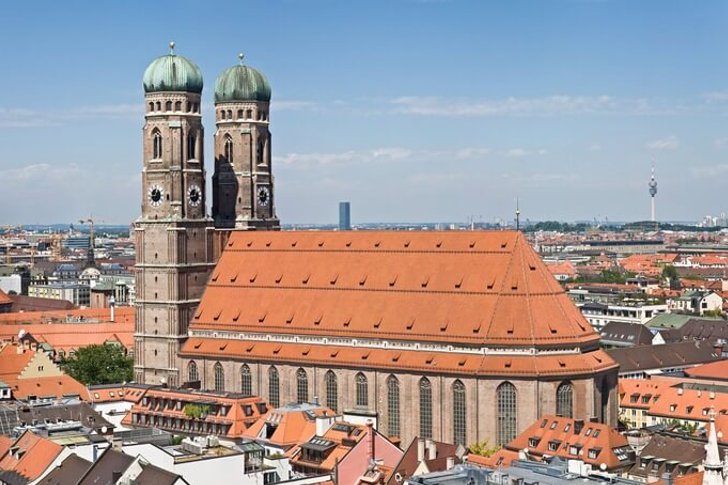
Azamkirche Church
The temple arose on the initiative of two Azam brothers, who were architects, sculptors and painters at the same time. This is one of the few historical sights that the Wittelsbach dynasty did not have a hand in. The brothers planned to use the church as a home chapel, but later, at the insistence of the people, it was open to everyone.

St. Peter's Church
The temple is one of the most revered and ancient in the city. It arose in the 8th century as a small wooden monastery on the initiative of the monks of the Tegernsee Monastery. In the 11th century, the church was rebuilt in the Romanesque style. After a fire in 1327, a new building in the Gothic style was born. In subsequent centuries, the church was rebuilt, expanded, elements of late Gothic and Rococo were added to the facade.
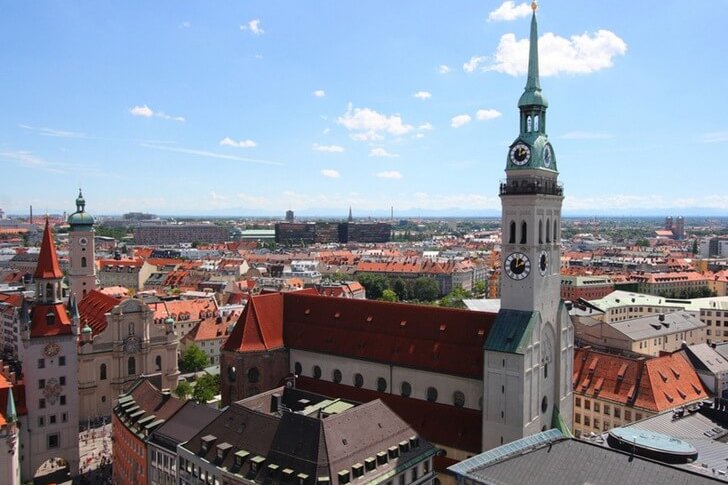
Bavarian State Opera
Munich's main opera house, where one of the most respected musical groups in the world, the Bavarian State Orchestra, plays. The venue hosts the Munich Opera Festival. More than 300 performances are given here annually, leading performers are invited to play the main roles. The repertoire includes works by famous German composers and the best masterpieces of world opera art.
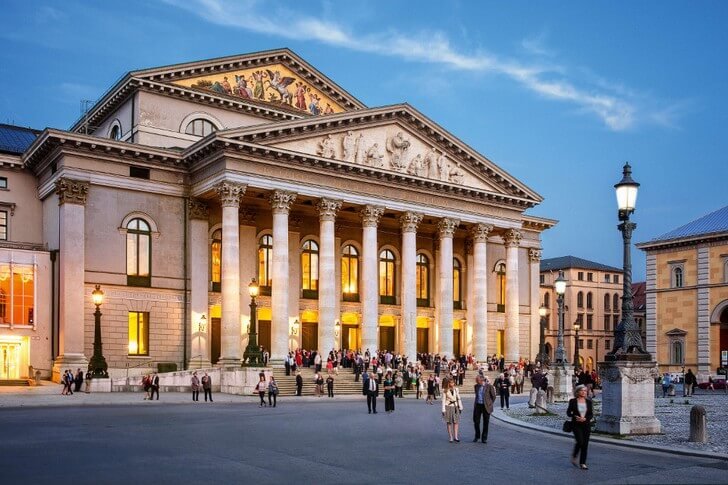
German Museum
A unique museum that demonstrates the achievements of German technology and science. The expositions are placed on six thematic tiers: hydraulic engineering, shipping, mining industry, trackless transport, oil and gas, power machines. The museum contains unique samples of equipment, the only ones that have survived (that is, not destroyed at the request of the victorious countries) after two World Wars.

Bavarian National Museum
The exposition of the museum is dedicated to Bavarian history, culture, folk art. Items made of porcelain, wood, silver, fabric and other materials are collected here. As well as significant collections of weapons, heraldic symbols, jewelry. A special pride of the museum is the collection of nativity scenes. The collection is housed in a historic baroque building with hundreds of interior spaces, passages and galleries.
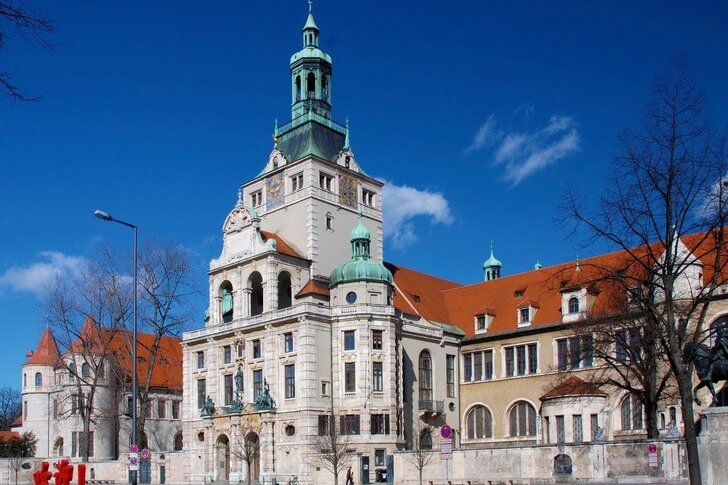
BMW Museum
Bavaria is the birthplace of the world-famous BMW brand car. It was here that the first factories for the production of aircraft were located, which after the First World War were retrained into automobile ones. Thus, a recognizable brand was born. In the museum you can see the products of the company from its very foundation. Many interesting and rare retro models of the last century are exhibited there.
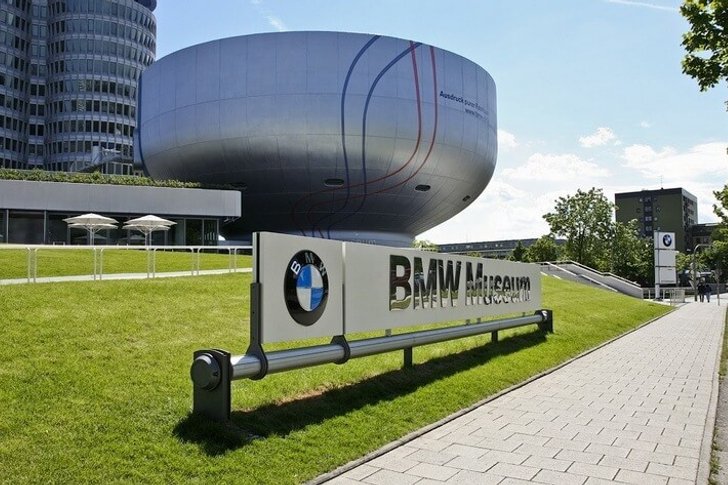
Glyptothek
Museum of Ancient Sculpture, which contains works of Roman and Greek masters from the 17th century BC. by the 5th century. Both originals and copies of statues, bas-reliefs, busts that have not survived to our time are exhibited here. The exposition is located in 13 halls. Here you can see statues of the mythical Hephaestus, Daedalus, Pericles and other characters. Most of the collection was collected by King Ludwig I.
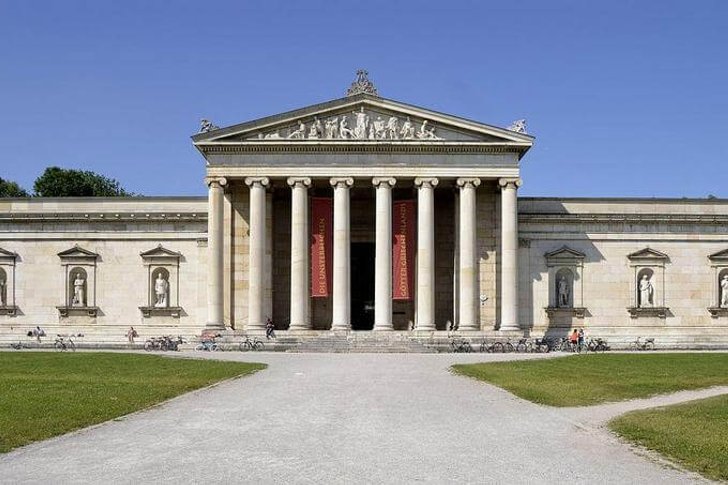
Pinakothek Munich
The collective name of a group of art galleries and museums, which houses a collection of paintings from the 14th century to modern times, as well as collections of modern and applied art. The Alte Pinakothek houses expositions of masters of the 14th-18th centuries. In Novaya you can look at works of art of the 19th-20th centuries. The Pinakothek der Moderne exhibits collections from the 20th and 21st centuries.

Memorial Museum Dachau
The museum is located outside the city limits of Munich near the town of Dachau on the site of a former concentration camp. All people objectionable to the Hitler regime were driven here for execution. For 12 years of existence, tens of thousands of people were killed in the camp. The museum was organized at the request of the former prisoners of the camp in 1965. Little is left of the buildings of the Second World War, but this place strikes with an ominous and oppressive atmosphere.

Olympic Park
In 1972, Munich hosted the next Summer Olympic Games. Since those times, there has been a park (a territory with Olympic facilities), which the locals use for recreation and walks. The former facilities are operated as sports training bases, and major social and cultural events are still held here. It should be noted that thanks to the Games, the city has changed and become more comfortable.

Allianz Arena
The stadium built for the start of the 2006 FIFA World Cup. It belongs to the Munich club Bayern Munich. It hosted the Champions League final in 2011/12. The Allianz Arena is located in the Frettmaning Heath. The building is called a real miracle of modern architectural art. At the entrance to the stadium, the fans are breathtaking from the sight of this grandiose structure.
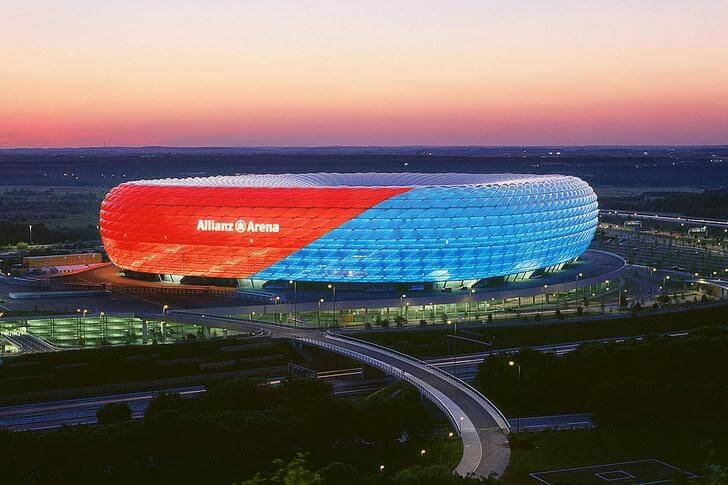
Oktoberfest
The famous beer festival, where all fans of the foamy drink strive to get. Dozens of producers set up their tents at Oktoberfest, where countless liters of beer are drunk, kilograms of sausages and pork knuckles are eaten. The festival has existed since 1810, for two centuries it has become a real symbol of Bavaria and organically blended into cultural traditions. Traditionally, the head of the Bavarian government drinks the first mug of beer at the opening.

Brasserie Hofbräuhaus
One of the oldest beer restaurants, which opened its doors to the first visitors at the beginning of the 17th century. At first, the court brewery was located here. The large halls of the establishment can simultaneously accommodate up to 4 thousand visitors. Hofbräuhaus has a flexible pricing policy, so every tourist can afford to try different varieties of excellent beer and enjoy German cuisine.

Viktualienmarkt market
The central city market, a real paradise for gourmets and connoisseurs of excellent products. There are about 140 shops here, which have been owned by the same families for many years. The place in the market is inherited. Viktualienmarkt is bought mainly by wealthy Munich residents and tourists, as the prices for products are quite high. At the same time, the products are always of excellent quality.
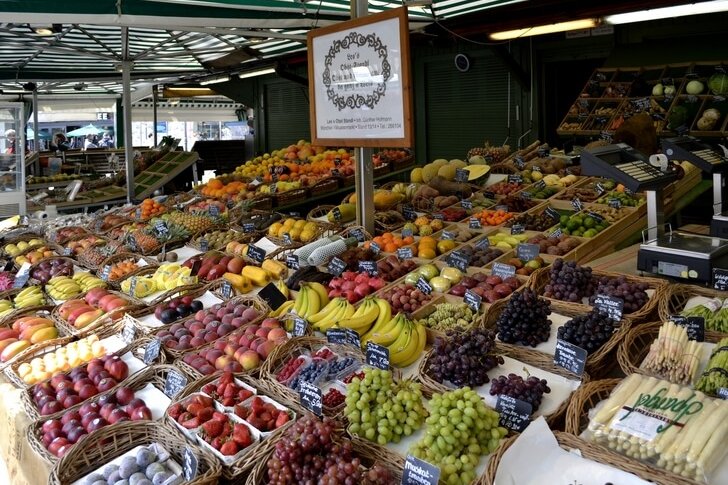
Hofgarten park
Landscape park with a layout in strict geometric proportions. It was founded under Maximilian I at the beginning of the 17th century, but was completely destroyed during the Second World War. The park was carefully and scrupulously restored according to old drawings and sketches, while elements of English park art of the 19th century were added. Hofgarten is the realm of neat alleys, flower beds, manicured lawns and picturesque fountains.
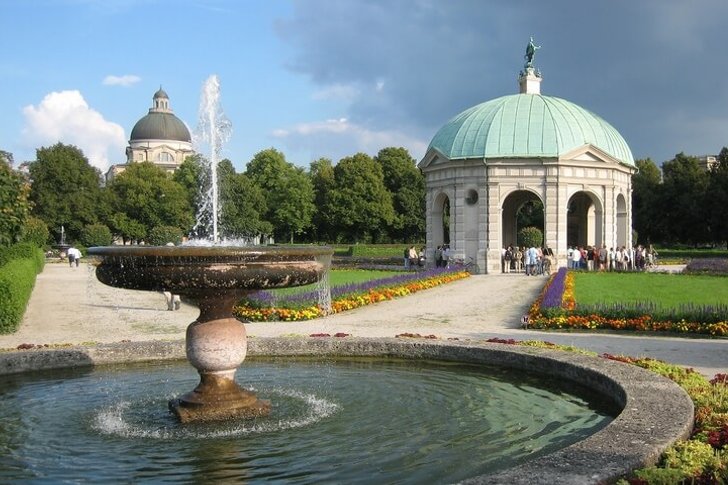
English garden
A city park popular with locals and visited by thousands of people every day. Here you can ride a bike and a board in specially designated areas, as well as order a horse ride or just walk. The park stretches from the center to the northern part of Munich for 5.5 km. In summer, the numerous lawns are filled with people - they sunbathe, have picnics or just take a nap under the shade of trees.

Munich Zoo Hellabrunn
The zoo is considered one of the best in Europe. Like many modern zoos, it is built on the principle of a natural park, that is, conditions are created for animals that are as close to natural as possible. The biological diversity of Hellabrunn is impressive - more than 750 species of animals and about 20 thousand individuals. The zoo is popular, it is visited by 1.8 million people annually.
